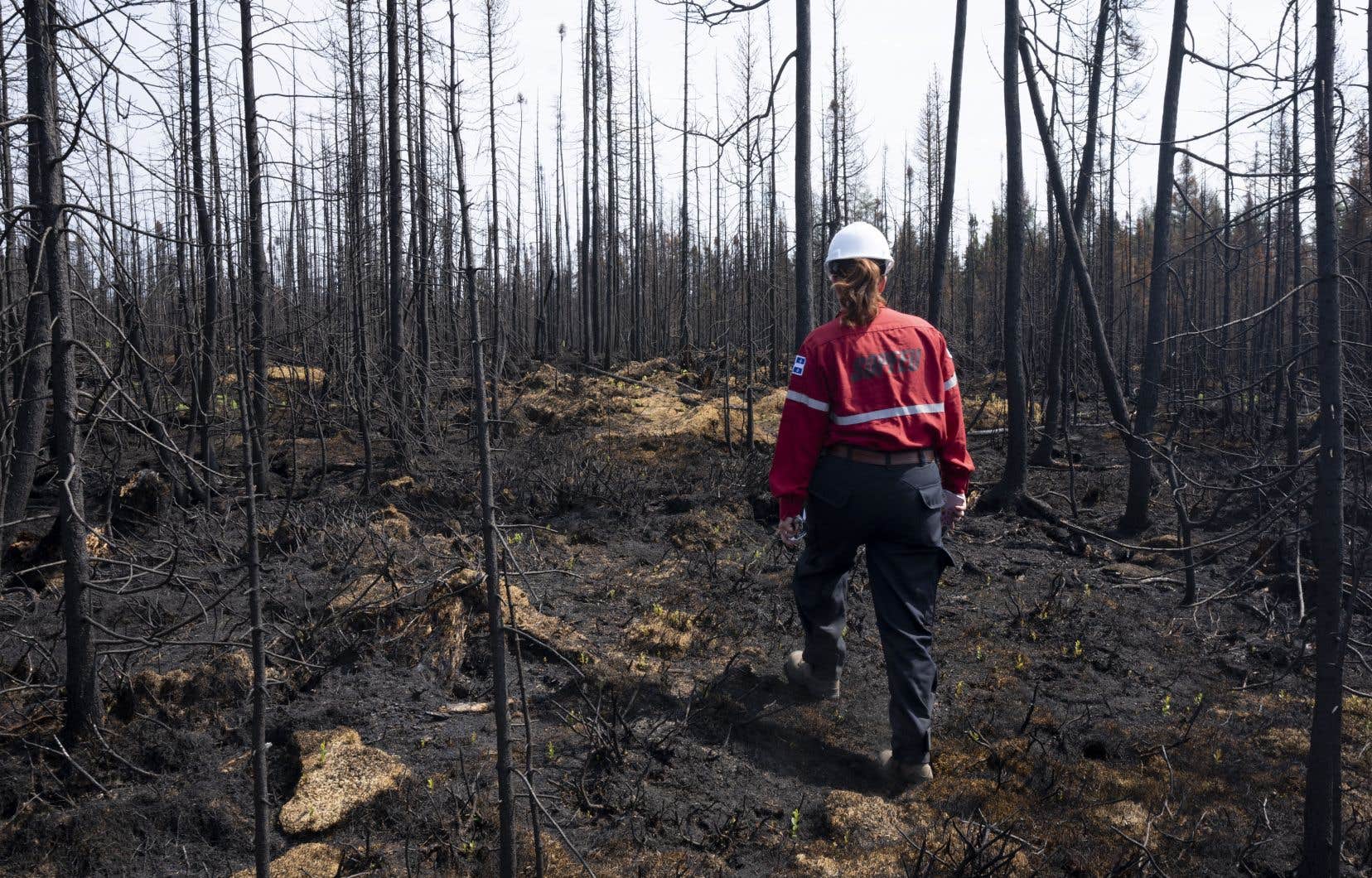One day, from a fire truck, I saw a line of fire advancing ahead of me in a boreal forest, a frightening sight. Suddenly, an immense tongue of fire leapt above the trees and flew away to fall 200 meters away. The sequence, broadcast in the report I produced for Radio-Canada, symbolizes for me the destructive power of fires. However, everything is reborn. About fifteen years later, passing this place, I saw a forest in full growth, black spruce trees standing side by side.
The year 2023 will remain marked by forest fires in Quebec. In a few months, more territory burned than ever in a century. The industry carries out salvage cuts of the wood before insects render it unusable, and restoration is planned centered on a major reforestation effort.
But the root of the problem is the impact of climate change.
According to Yann Boulanger, researcher at Natural Resources Canada, “in the coming years, temperatures will continue to increase and conditions conducive to fires will become even more severe and more frequent.” The worst is therefore to come, a long-term action plan is necessary.
We will have to take care of the entire boreal forest, not just the one that is logged. This forms a sort of trapezoid 400 km high, on bases of 1200 km and 700 km. To the north, above the commercial forest allocation limit, a still dense forest strip, and to the south, as well as to the east towards the Gaspésie, a transitional territory towards the deciduous forest. The trapezoid is what foresters call “the productive forest”, a notion which only concerns what they exploit, the woody material. Broader, the forest ecosystem provides numerous goods and services: climate regulation, water circulation, carbon storage, landscapes, vacations, etc. Thousands of species of plants and animals interact on several levels. We must aim for ecological resilience, or, according to the definition still used by the Canadian ecologist CS Holling, “the capacity, for an ecosystem, to absorb disturbances and to reorganize itself by changing”.
In 2013, to make the forest more sustainable, the principle of ecosystem management was enshrined in law, but 10 years later, the results have not been there. Forest harvests have generally decreased in volume and regeneration and soils are now protected, but there is still a lot of almost total felling taking place. Several intact massifs have been attributed to industry, which continues further north.
Quebec has slowed down the implementation of its reform and the industry has practically not innovated in intensive management, a solution envisaged in return for a slowdown in the pace of harvests. Government inaction and forgotten promises: in a document published at the beginning of September, Quebec’s chief forester, Louis Pelletier, is critical and believes that current forest management is no longer sustainable.
The forest fire crisis has awakened fears that large swaths of burned forests will be transformed into so-called open forests or ericaceous heaths. A scarecrow that the industry raises, because it will not be able to exploit these lands. But natural regeneration is powerful, the dominant trees of the boreal forest are well adapted to it and we must focus on it in the first place.
An underestimated element is that Quebec still has some large areas of intact forests, which have considerable ecological value. These primary forests, often old, store more carbon than those which are under management and their species diversity is much greater. What’s more, older forests are more resilient to natural disturbances like fires and insect outbreaks. They still represent 10 to 15% of the entire boreal forest. Some are already included in protected areas, others are not. Saving them is a priority in the climate and biodiversity crisis.
The future of Quebec’s forests does not depend on a massive reforestation campaign, but on a long-term plan that would target the entire forest mega-ecosystem (biome) using a global ecological approach. This approach will need to be clarified rigorously. Some will claim that it is the same thing as ecosystem planning but this is not true and by being glossed over, this concept has been emptied of its meaning. It is time to broaden the debate.
In a renewed framework, we can imagine a significant increase in protected areas and sometimes interventions in exploited areas to diversify the species composition of certain populations or reforest a little where it is useful, but most often, it will be appropriate to leave do nature. It will give us resilient forests in exploited areas and on the outskirts. Faced with climate change and the erosion of biodiversity, we must allow more and more forests to regenerate naturally and protect the primary or old forests that remain. They are our surest allies in the current crisis.
